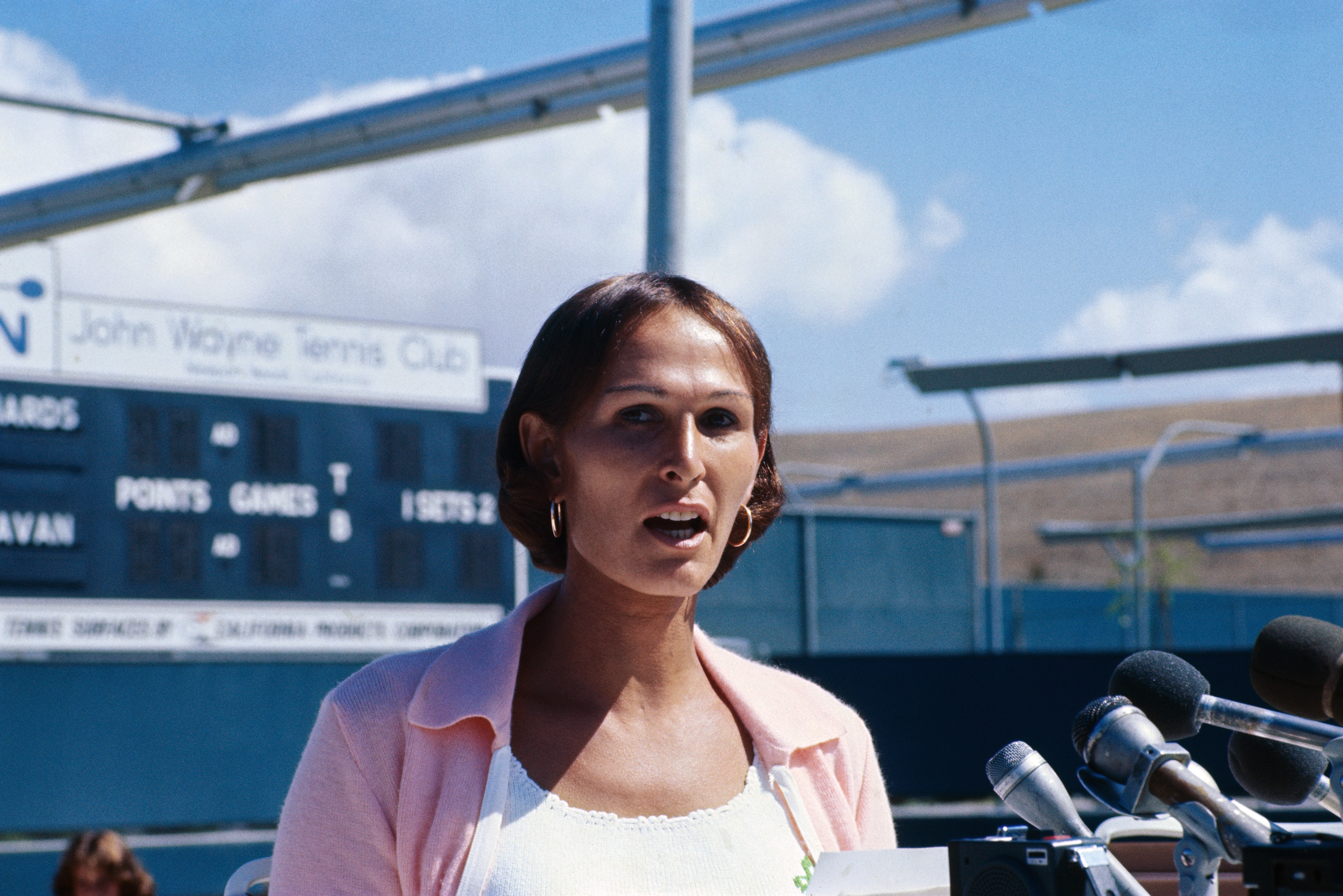

41 years ago, Renée Richards walked into Arthur Ashe stadium for the U.S. Open and became the first transgender woman to compete in a professional tennis tournament. As a trans male tennis player, Renée’s journey to represent her country and trans people in tennis has been an incredible source of inspiration for me.
I learned about Renée while I was in the process of transitioning. I had attended a workshop and spoke about my passion for tennis. A woman then told me about a trans woman who used to play professionally and that’s when I found Renée and dove into her incredible story.
Renée’s first appearance in tennis was in 1953, competing in the men’s draw at the U.S. Nationals. Twenty-two years later, Renée transitioned and moved to California. When Renée won the La Jolla Tennis Tournament in 1976, a TV station reported that Renée was a man masquerading as a woman. After that she became front-page news and controversy ensued. Renée endured chromosome testing, boycotts from fellow players and a ban by sport’s officials. Renée was determined to prove that trans people, “as well as other persons fighting social stigma, can hold their heads up high.”

After refusing to undergo gender verification testing, Renée was denied entry into the U.S. Open, Wimbledon, and the Italian Open in 1976. She proceeded to sue the U.S. Tennis Association, asserting that being allowed to compete would constitute “an acceptance of her right to be a woman.” On August 16, 1977, the judge ruled in Renée’s favour and said the USTA had been intentionally discriminatory towards Richard and could compete in the U.S. Open that year. While she lost in the first round of the singles competition, she made it through to the doubles final.
While many sports players claim to have changed the game, Renée genuinely did, and for the better. She broke through gendered norms and regulations of the tennis industry and sports more generally. She carried on campaigning without fear of consequence or controversy. She battled and fought hard to change the laws of the tennis industry to have trans people recognised in the sport she loved.
She always told her truth to people – not just about how she felt, but also in the way she played. She challenged the Open era to live up to its very name by breaking through and making the game welcome to anyone.
Both on and off court, Renée has been a role model for LGBT people around the globe, but also to tennis players and fans. She’s undoubtedly a pioneer in the world of LGBT-inclusion in sport and is a symbol of progress many other sports should look to follow. Which is why, for me personally, she has been my biggest inspiration and deserves her place in history as a crucial LGBT figure.
This week we are hosting a mini-series from our blogging community on the LGBTQ+ figures who have been the biggest inspiration for them.